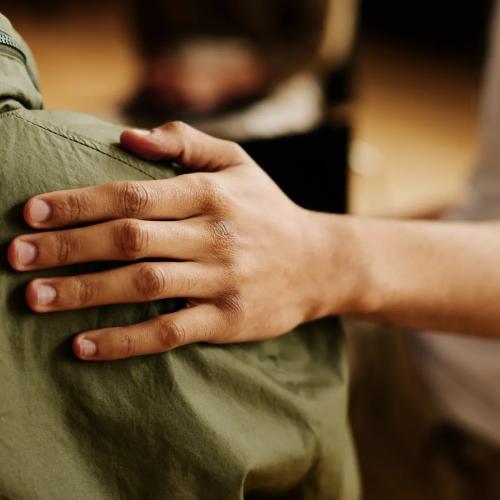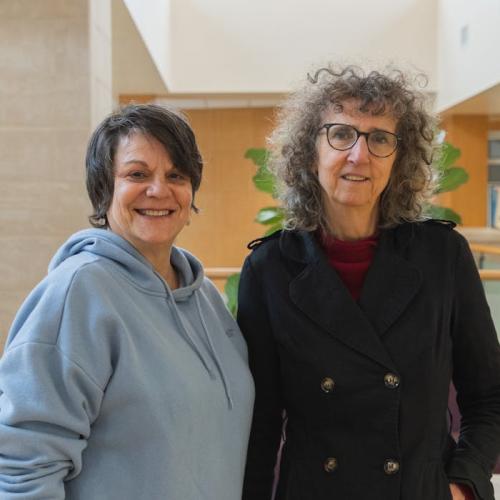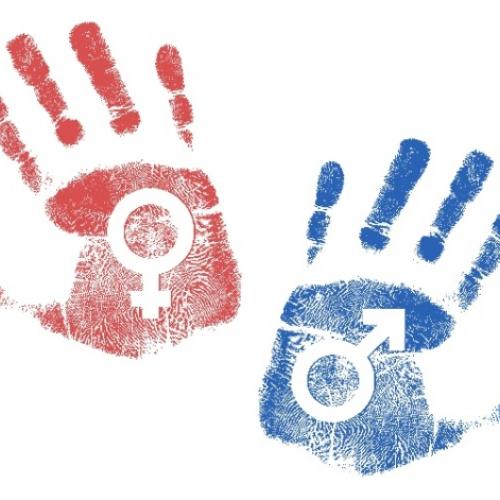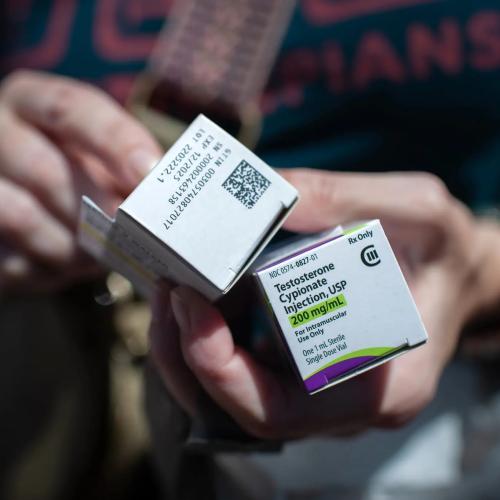Inspiring: Repairing Our Criminal Justice System News Articles
Below are key excerpts of inspiring news articles on repairing our criminal justice system from reliable news media sources. If any link fails to function, a paywall blocks full access, or the article is no longer available, try these digital tools.
For further exploration, delve into our Inspiration Center.
It happened 25 years ago - up to 800,000 people in Rwanda killed - mostly from the minority Tutsi community, all of that over the course of just a hundred days. Today the hundreds of thousands of people who carried out those killings live among their victims. Journalist and author Philip Gourevitch has witnessed the unique way Rwandans have defined and navigated forgiveness after the massacre. There was a lot of agency in the local level. And the experience of the genocide was extremely localized. People were killed by neighbors. It was intimate. They knew each other. And to simply ignore that wouldn't work. In order to navigate the aftermath of the genocide, the Rwandan government set up this nationwide reconciliation process. So they set up a system of community courts - without lawyers - to sort of repurpose a system that really had only been used for small claims mitigation in traditional Rwanda, called gacaca, and have open, communal - what we might call a town hall - format for trials. And then the idea was to hold people accountable and have a system of punishment. And this system banked very heavily on encouraging confession and rewarding it. But the confessions were supposed to be also verified by the community. The motto of the gacaca courts was, truth heals. Forgiveness doesn't require trust. Forgiveness simply means letting go of the idea of getting even, forgoing the idea of revenge. Right? Now, even that's a big ask. But it means accepting coexistence. There's never been as comprehensive a reckoning with such communal violence or mass atrocity. It was an ongoing, multi-year confrontation with the past in the communities.
Note: Explore a treasure trove of concise summaries of incredibly inspiring news articles which will inspire you to make a difference.
In 2012, according to FBI data, 2,774 violent crimes were reported to the Flint Police Department. In 2022, 985 were reported. Like other “legacy cities” that have experienced significant economic decline and population loss, Flint, [Michigan] is still struggling. But now, through the Genesee County Land Bank’s Clean & Green program, Ishmel and hundreds of other residents have been mowing vacant lots. Greening projects like these maintain abandoned spaces, either by mowing them or converting them into gardens and parks. But these projects don’t just make the neighborhood feel safer. Researchers who have been studying the effects of greening in Flint; Philadelphia; Youngstown, Ohio; and other legacy cities have shown repeatedly that it actually reduces violent crime. “It is one of the most consistent findings I’ve ever had in my 34-year career of doing research,” says Marc A. Zimmerman, professor at the University of Michigan School of Public Health. A review of 45 papers found that the presence of green spaces, including parks and trees, reduces crime in urban areas. In Flint, Zimmerman and his colleagues compared streets where community members maintained vacant lots through Clean & Green with streets where vacant lots were left alone, over five years. The maintained ones had almost 40 percent fewer assaults and violent crimes. One study found that while simply maintaining vacant lots reduced burglaries, turning them into gardens reduced assaults.
Note: Explore more positive stories like this in our comprehensive inspiring news articles archive focused on solutions and bridging divides.
APAC, a Brazilian non-profit that advocates for better treatment of prisoners, has a unique model in the dozens of facilities it manages across the country. Inmates oversee security and discipline, make their own food and wear their own clothes. Referred to as "recovering persons", prisoners are called by their name rather than by a number. The more than 400 inmates in the Sao Joao del-Rei APAC facility have the keys to their own cells - and unlike in a typical prison, there are no armed guards monitoring their movements. This is a far cry from the norm in Brazil, where the total prison population exceeds 800,000. The country's human rights ministry has cited inhumane conditions, including rotten food and torture, inside prisons in the state of Rio Grande do Norte. In 2021, a report from the Inter-American Commission on Human Rights said that across Brazil, inmates were "often held in overcrowded and structurally deficient prisons, maltreated, and frequently subjected to torture". In APAC prisons, cells appear clean, food is fresh and education is part of the rehabilitation programme. In terms of recidivism, while the Brazilian state reports its national average at 39 percent after five years - a number much lower than the 80 percent cited by international observers - APAC says its facilities have a rate of around 14 percent. New inmates entering the Sao Joao del-Rei facility are greeted by a sign bearing the words: "Here the man enters, the crime stays outside."
Note: Explore more positive stories like this in our comprehensive inspiring news articles archive focused on solutions and bridging divides.
August 9, 2014, was one of the most memorable days of my life. On that day I entered a maximum-security prison in Lancaster, Calif. to witness an extraordinary event connecting the lives of some of its inmates with a pack of rescued shelter dogs. Five lucky dogs ... were pulled from a high-kill shelter in Los Angeles and entered this Level 4 prison for a chance at a better life. Earlier this year, Karma Rescue, a nonprofit that saves at-risk dogs from high-kill shelters across Southern California, partnered with the California State Prison Los Angeles County in Lancaster to create "Paws for Life," a program that matches rescued dogs with inmates who train them to boost their odds of adoption. Fourteen inmates were ... selected to train five shelter dogs who stayed at the prison this summer for a 12-week program. From the very beginning, the program struck a chord with everyone involved. Karma Rescue's founder Rande Levine wrote, "Men who had not seen an animal in decades were openly emotional at the sight of the beautiful creatures before them. Just petting our dogs brought many to happy tears. It was a day I will never, ever forget." Several times a week, professional dog trainer Mark Tipton and several dedicated Karma Rescue volunteers drove out to the prison to instruct the inmates on how to train their assigned dogs for 'Canine Good Citizen' certification, a designation that increases the chance that a dog will be successfully adopted.
Note: Don't miss the moving pictures of this inspiring program at the link above. Explore a treasure trove of concise summaries of incredibly inspiring news articles which will inspire you to make a difference.
Ray, a man in his 50s, used to live in an emergency homeless shelter in Vancouver, Canada. Then he participated in a study that changed his life. The newly published, peer reviewed PNAS study, conducted by the charity Foundations for Social Change in partnership with the University of British Columbia, was fairly simple. It identified 50 people in the Vancouver area who had become homeless in the past two years. In spring 2018, it gave them each one lump sum of $7,500 (in Canadian dollars). And it told them to do whatever they wanted with the cash. Over the next year, the study followed up with the recipients periodically, asking how they were spending the money and what was happening in their lives. The recipients of the cash transfers did not increase spending on drugs, tobacco, and alcohol, but did increase spending on food, clothes, and rent. What’s more, they moved into stable housing faster and saved enough money to maintain financial security over the year of follow-up. “Counter to really harmful stereotypes, we saw that people made wise financial choices,” Claire Williams, the CEO of Foundations for Social Change, [said]. What’s more ... giving out the cash transfers in the Vancouver area actually saved the broader society money. Enabling 50 people to move into housing faster saved the shelter system $8,277 per person over the year, for a total savings of $413,850. That’s more than the value of the cash transfers, which means the transfers pay for themselves.
Note: Explore more positive stories like this in our comprehensive inspiring news articles archive focused on solutions and bridging divides.
There are over 4,100 private companies in the U.S. profiting off of mass incarceration, which is a multi-billion-dollar business. With an incarcerated population of 2.2 million, the U.S. does not have a system premised on reform or creating model citizens. Most return to public life worse than when they began their prison sentences, only to be overshadowed by a national recidivism rate that’s staggering — as high as 70 percent within the first five years out and 80 percent for prisoners with juvenile records. In the restorative justice theory of change, prisoners self-identify with new, positive identities, replacing old negative self-identities. As a result, they develop healthy social support that reinforces these new identities. The concept: If you think you are scum, you will act like scum. However, if you think you are gifted, with talents, abilities and a positive identity, that’s how you will more likely act on a regular basis. Restorative justice views crime not simply as the breaking of a law, but as damage to individuals, property, relationships and the community. It represents a holistic approach to addressing criminal behavior. And it becomes a great tool toward healing the communities harmed. When we build relationships, we humanize each other and rather than simply being faceless people, we become friends, family members, students and mentors. It then becomes easier for participants to understand the harm they caused and to take responsibility. It’s a chance for the offenders to examine themselves, and understand why they made the choices they did, how they harmed the victim, family and community, and what they can do differently in the future.
Note: We've summarized many articles about the power of restorative justice. Explore more positive stories like this in our comprehensive inspiring news articles archive focused on solutions and bridging divides.
When we think about people who are behind bars for crimes simple or heinous, our minds take us to a place of judgment. We may view inmates as less than: less intelligent, less successful, less worthy of love and support. We may see them as “other.” The reality is, we may all be a few experiences away from potentially committing a crime. A video that poignantly highlights the dynamics that could lead to incarceration is called Step Inside the Circle. It begins with a group of 235 men in blue uniforms in a yard of a maximum-security prison. Barbed wire and guards surround them. They tower over a petite blond woman wearing a black and white t-shirt that says There Is No Shame. She carries a megaphone through which she invites them to step inside the circle if they have experienced verbal or physical abuse and neglect, if they lived in a home without feeling loved, if they had given up on themselves. One by one and then in multitudes, they join Fritzi Horstman as together they chant “There is no shame,” over and over. A group of them move indoors and sit in a circle of chairs with Horstman admitting her own wounds that led to criminal activity. That opened the door for the participants to describe the wounds they have carried for much of their lives. [The] men were visibly moved, some wiping their eyes, some providing brotherly support and admitted that they were breaking the code by being vulnerable. They discovered that it was a unifying experience and they felt less isolated as a result.
Note: Two short, incredibly inspiring documentaries show how these inmates' lives have been transformed. Don't miss "Step Inside the Circle" (7 min) and "Honor Yard" (8 min).
On Bastoy, an island 46 miles south of Oslo, [125] residents live in brightly colored wooden chalets, spread over one square mile of forest and gently sloping hills. They go horseback riding and throw barbecues, and have access to a movie theater, tanning bed and, during winter, two ski jumps. Despite all its trappings, Bastoy island isn't an exclusive resort: it's a prison. Bastoy's governor ... describes it as the world's first human-ecological prison a place where inmates learn to take responsibility for their actions by caring for the environment. Prisoners grow their own organic vegetables, turn their garbage into compost and tend to chickens, cows, horses and sheep. The prison generally emphasizes trust and self-regulation: Bastoy has no fences, the windows have no bars, and only five guards remain on the island after 3 p.m. In an age when countries from Britain to the U.S. cope with exploding prison populations by building ever larger and, many would say, ever harsher prisons, Bastoy seems like an unorthodox, even bizarre, departure. But Norwegians see the island as the embodiment of their country's long-standing penal philosophy: that traditional, repressive prisons do not work, and that treating prisoners humanely boosts their chances of reintegrating into society. Norway's system produces overwhelmingly positive results. Within two years of their release, 20% of Norway's prisoners end up back in jail. In the U.K. and the U.S., the figure hovers between 50% and 60%. Of course, Norway's ... prison roll lists a mere 3,300 inmates, a rate of 70 per 100,000 people, compared with 2.3 million in the U.S., or 753 per 100,000 the highest rate in the world.
Note: Why aren't other countries taking heed of Norway's excellent example? Part of the reason is that some companies make massive profits from the prison system. For more on this, click here.
New research shows the meditative exercise improves mental health, reduces stress and can prevent reoffending. The power of yoga to change [a prisoner's] life is backed by two Swedish studies that found it may reduce reoffending. The new study, led by Professor Nra Kerekes at University West, Trollhtten, in Sweden, and published last week in Frontiers in Psychiatry, found that 10 weeks of regular yoga can lead to a significant reduction in obsessive-compulsive and paranoid thinking, which in turn, say researchers, can make reoffending less likely. This effect is specific to yoga, and not to exercise in general, they found. It can also lead to a decrease in somaticisation (mental distress leading to physical symptoms such as breathing problems, heart pains and stomach upsets). The study of 152 volunteers in nine medium- and high-security prisons in Sweden builds on a 2017 study of the same volunteers that showed that yoga improved stress levels, concentration, sleep quality, psychological and emotional wellbeing, as well as reducing aggression and antisocial behaviour. A Prison Service spokeswoman says: Research shows activities like this can make prisoners less likely to reoffend, keeping the public safer. She was unable to explain why, given this evidence, it wasnt government policy to make yoga available to all prisoners, but said it was up to individual prison governors to decide which activities to offer.
Note: Explore a treasure trove of concise summaries of incredibly inspiring news articles which will inspire you to make a difference.
Back in 2005, Jameel McGee says he was minding his own business when a police officer accused him of - and arrested him for - dealing drugs. "It was all made up," said McGee. Of course, a lot of accused men make that claim, but not many arresting officers agree. "I falsified the report," former Benton Harbor police officer Andrew Collins admitted. "Basically, at the start of that day, I was going to make sure I had another drug arrest." And in the end, he put an innocent guy in jail. "I lost everything," McGee said. "My only goal was to seek him when I got home and to hurt him." Eventually, that crooked cop was caught, and served a year and a half for falsifying many police reports, planting drugs and stealing. Of course McGee was exonerated, but he still spent four years in prison for a crime he didn't commit. Today both men are back in Benton Harbor, which is a small town. Last year, by sheer coincidence, they both ended up at faith-based employment agency Mosaic, where they now work side by side in the same caf. And it was in those cramped quarters that the bad cop and the wrongfully accused had no choice but to have it out." I said, 'Honestly, I have no explanation, all I can do is say I'm sorry,'" Collins explained. McGee says that was all it took. "That was pretty much what I needed to hear." Today they're not only cordial, they're friends. Such close friends, not long ago McGee actually told Collins he loved him. "And I just started weeping because he doesn't owe me that. I don't deserve that," Collins said.
Note: Don't miss the beautiful video of this story at the link above.
People experiencing mental or behavioral health crises and addiction have often been subject to police use of force, arrest and incarceration. [There are] efforts around the country to change that. One of the most common new approaches ... are civilian co-responder programs, in which behavioral health specialists, often social workers, show up to certain emergency calls alongside police. These can include situations like suicide threats, drug overdoses, and psychiatric episodes. Typically, the officers on the team have special training in crisis intervention. Generally, these teams aim to de-escalate any crisis or conflict, avoiding arrest and solving the reason for the emergency call, especially if it’s a simple one. This week, the New Jersey Monitor reported that one call “for a welfare check on a woman with anxiety ended with the [state] trooper picking up her new cell phone from the post office and fixing a broken toilet” and the emergency call screener setting up her new phone. The Monitor also found that the program avoided arrests or police use of force in 95% of responses. The B-HEARD program in New York City, which is just three years old in a diverse city of 8.5 million, responded to roughly a quarter of mental health calls in precincts where it operated in the first half of 2023. Mental health calls make up 10% of all 911 calls in the city. In Denver, a study of the city’s STAR program found the alternative response model reduced low-level crime.
Note: Explore more positive stories about repairing the criminal justice system.
Northwestern University's Prison Education Program welcomed its inaugural graduating class of incarcerated students on Wednesday, marking the first time a top-ranked U.S. university has awarded degrees to students in prison. Evanston, Illinois-based Northwestern ... runs the program in partnership with Oakton College and the Illinois Department of Corrections. It was a moving commencement ceremony for the 16 graduating men and their loved ones at the Stateville correctional facility in Crest Hill. "I have no words for this, (it's) otherworldly. Coming from where I came from, the things that I've been through and to be here is indescribable," said graduate Michael Broadway after the ceremony. Broadway attained his degree despite several setbacks, including battling stage 4 prostate cancer. "I'm just so proud of him," said his mother Elizabeth. "I really am. He looks so good in that gown." Due to ill health, she had not seen Broadway since ... 2005. Professor Jennifer Lackey is the program's founding director. "Twenty years ago, some of these guys were in rival gangs, and here they are swapping poetry with each other and giving critical engagements on sociology assignments," said Lackey. "The love and growth that we see in the community is really unlike anything I've experienced at the on-campus commencements." Around 100 students are enrolled in the Northwestern program across Stateville and the Logan Correctional Center, a women's prison.
Note: Explore more positive stories like this in our comprehensive inspiring news articles archive focused on solutions and bridging divides.
“Nelson Mandela – I’d never heard the name before in my life,” a former prison guard to the South African icon recalls. Christo Brand casts his mind back to 1978, and his first night guarding one of the most influential people of the past century. He was just 19 years old. A sergeant informed him the ageing man sleeping uncomfortably on the floor of the Robben Island jail cell was “a terrorist trying to overthrow your country”. Mr Brand ... soon became close with Mandela. He began to spend days and nights with Mandela, who he says remained charming even after some 16 years as prisoner 466/64. In time he saw virtue in the older man’s crimes. Reflecting after years at Mandela’s side, years in which he saw his friend slowly but surely topple the old order, Mr Brand says: “Mandela was fighting for the freedom of the country, he was prepared to go to the gallows for freedom for his people”. “When Mandela was in prison,” Mr Brand says, “he studied Martin Luther King and Gandhi, he tried to follow their footsteps and try to bring a change.” In his memoir Long Walk to Freedom, Mandela hints at why he kept his prison officer at his side even after being freed. Mr Brand, he writes, “reinforced my belief in the essential humanity even of those who had kept me behind bars”. Mandela emerged from prison in 1990 already negotiating with South Africa’s leadership for the changes that would see the country’s first democratic election a few years later.
Note: Read more on Nelson Mandela's powerful capacity for empathy, and how he served as a striking role model for addressing the hearts, not minds, of people we deem as opponents or oppressors.
Correctional systems throughout much of Scandinavia are guided by a general set of philosophical principles. In Norway, core values of safety, transparency and innovation are considered fundamental to the idea of creating normality in prison, the feeling that life as part of a community continues. Incarcerated people can wear their own clothes, work in jobs that prepare them for employment and cook their own meals. Cells in Norway are also for a single person – not multiple people, as in most cases in the U.S. Importantly, correctional officers have at least a two-year, university-level education and are directly involved in rehabilitation and planning for the incarcerated person’s re-entry into the world outside of prison. In the U.S., most officers receive just a few weeks of training. Recidivism rates in Scandinavia are low. In Norway ... less than half of people released from prison are rearrested after three years. In Pennsylvania, that figure is closer to 70%. In State Correctional Institution Chester, known as SCI Chester, a medium-security prison located just outside of Philadelphia, a correctional officer-guided team has worked since 2018 to incorporate Scandinavian penal principles into its own institution. Six men in SCI Chester – each sentenced to life in prison – were selected to participate. They then moved on to the new housing unit, which had come to be known as “Little Scandinavia.” SCI Chester shows that it is, in fact, possible to adapt Scandinavian-style penal philosophies.
Note: Explore a treasure trove of concise summaries of incredibly inspiring news articles which will inspire you to make a difference.
An African American family of six sits inside the Nissan Quest in this first-ring suburb of St. Paul. The car tells a story of poverty: Plastic covers a broken window; rust lines the wheel wells. Officer Erin Reski pulled the vehicle over for a burned-out taillight, a problem similar to the one that led an officer to stop Philando Castile in the Twin Cities two years ago. That incident ... ended with Castile fatally shot. This situation ends very differently. Reski walks back to the minivan ... hands over a sheet of paper and offers a brief explanation. The response is swift and emphatic. Oh, thank you! the driver says. Scenes like this have been taking place across the Twin Cities thanks to the Lights On program, believed to be the first of its kind in the country. Instead of writing tickets for minor equipment problems, police officers are authorized to issue $50 coupons so motorists can have those problems fixed at area auto shops. Twenty participating police departments have given out approximately 660 coupons in a little more than a year. For motorists such as Sandy Patterson, another African American resident who was pulled over for a burned-out headlight in January, the small gesture of being offered a coupon makes a big difference. I was relieved that I was getting a voucher to purchase a service that couldve been quite expensive, she said. I had an overwhelming feeling of decreased anxiety because of the whole way the communication went, with somebody helping out versus giving a ticket.
Note: Explore a treasure trove of concise summaries of incredibly inspiring news articles which will inspire you to make a difference.
Swedish prisons have long had a reputation around the world as being liberal and progressive. The head of Sweden's prison and probation service, Nils Oberg, announced in November that four Swedish prisons are to be closed due to an "out of the ordinary" decline in prisoner numbers. Although there has been no fall in crime rates, between 2011 and 2012 there was a 6% drop in Sweden's prisoner population, now a little over 4,500. A similar decrease is expected this year and the next. The Swedes [have] managed to maintain a broadly humane approach to sentencing, even of the most serious offenders: jail terms rarely exceed 10 years; those who receive life imprisonment can still apply to the courts after a decade to have the sentence commuted to a fixed term, usually in the region of 18 to 25 years. Sweden was the first country in Europe to introduce the electronic tagging of convicted criminals and continues to strive to minimise short-term prison sentences wherever possible by using community-based measures proven to be more effective at reducing reoffending. The overall reoffending rate in Sweden stands at between 30 and 40% over three years around half that in the UK. One likely factor that has kept reoffending down and the rate of incarceration in Sweden below 70 per 100,000 head of population less than half the figure for England and Wales is that the age of criminal responsibility is set at 15. Unlike the UK, where a life sentence can be handed down to a 10-year-old, in Sweden no young person under the age of 21 can be sentenced to life and every effort is made to ensure that as few juvenile offenders as possible end up in prison.
Note: For a Time magazine article showing how Norway's prisons actually rehabilitate prisoners so that they can more easily fit back in society, click here. For a treasure trove of great news articles which will inspire you to make a difference, click here.
Most modern justice systems focus on a crime, a lawbreaker and a punishment. But a concept called restorative justice considers harm done and strives for agreement from all concerned the victims, the offender and the community on making amends. And it allows victims, who often feel shut out of the prosecutorial process, a way to be heard and participate. In this country, restorative justice takes a number of forms, but perhaps the most prominent is restorative-justice diversion. There are not many of these programs a few exist on the margins of the justice system in communities like Baltimore, Minneapolis and Oakland, Calif. but, according to a University of Pennsylvania study in 2007, they have been effective at reducing recidivism. Typically, a facilitator meets separately with the accused and the victim, and if both are willing to meet face to face without animosity and the offender is deemed willing and able to complete restitution, then the case shifts out of the adversarial legal system and into a parallel restorative-justice process. All parties the offender, victim, facilitator and law enforcement come together in a forum sometimes called a restorative-community conference. Each person speaks, one at a time and without interruption, about the crime and its effects, and the participants come to a consensus about how to repair the harm done. The methods are mostly applied in less serious crimes, like property offenses in which the wrong can be clearly righted. The processes are designed to be flexible enough to handle violent crime like assault, but they are rarely used in those situations.
Note: This deeply moving and highly educational piece from the New York Times Magazine about the power of restorative justice is well worth reading in its entirety at the link above.
What if someone told you that you could dramatically reduce the crime rate without resorting to coercive policing or incarceration? it sounds too good to be true. But it’s been borne out by the research of Chris Blattman, Margaret Sheridan, Julian Jamison, and Sebastian Chaskel. Their new study provides experimental evidence that offering at-risk men a few weeks of behavioral therapy plus a bit of cash reduces the future risk of crime and violence, even 10 years after the intervention. Sustainable Transformation of Youth in Liberia ... offered men who were at high risk for violent crime eight weeks of cognitive behavioral therapy. [Economist Chris] Blattman wanted to formally study just how effective this kind of program could be. He decided to run a big randomized controlled trial with 999 of the most dangerous men in Monrovia, recruited on the street. The 999 Liberian men were split into four groups. Some received CBT, while others got $200 in cash. Another group got the CBT plus the cash, and finally, there was a control group that got neither. A year after the intervention, the positive effects on those who got therapy alone had faded a bit, but those who got therapy plus cash were still showing huge impacts: crime and violence were down about 50 percent. 10 years later ... crime and violence were still down by about 50 percent in the therapy-plus-cash group. Blattman estimates that there were 338 fewer crimes per participant over 10 years. [The program] cost just $530 per participant. That works out to $1.50 per crime avoided.
Note: Explore a treasure trove of concise summaries of incredibly inspiring news articles which will inspire you to make a difference.
All Square in Minneapolis, Minnesota ... with its bright pink neon sign buzzing in the window on Minnehaha Avenue, is serving up much more than gooey sandwiches. Launched in September 2018 by a civil rights lawyer, All Square is a social enterprise that uses its restaurant (and a food truck) to right the wrongs of the American criminal justice system. The staff of All Square “fellows” is a rotating cohort of formerly incarcerated people. During the nine-month fellowship, employees receive not only a living wage, but also wraparound services like therapy sessions, professional development support and access to funding opportunities. To date, All Square has provided 48 fellowships, $2.8 million in wages ($1.6 million of which has gone directly to formerly incarcerated Minnesotans), 400 therapy sessions, and more than $60,000 in micro-grants for seed capital and debt alleviation. The overarching goal of All Square is to offer a true second chance at life post-incarceration that is otherwise systematically denied through near insurmountable restrictions to necessities like housing and jobs. Leveraging entrepreneurship to sidestep the inability to access traditional employment is just what Onika Goodluck, one of the original 14 fellows, did. Turned onto the program by her probation officer, Goodluck applied and after two interviews, landed the gig. After 10 years of on-and-off incarceration ... she says that therapy has made the biggest difference.
Note: Explore a treasure trove of concise summaries of incredibly inspiring news articles which will inspire you to make a difference.
The turnoff to Norways newest prison was marked by a modest sign. There were no signs warning against picking up hitchhikers, no visible fences. Halden Fengsel ... is often called the worlds most humane maximum-security prison. To anyone familiar with the American correctional system, Halden seems alien. Its modern, cheerful and well-appointed facilities, the relative freedom of movement it offers, its quiet and peaceful atmosphere these qualities are so out of sync with the forms of imprisonment found in the United States that you could be forgiven for doubting whether Halden is a prison at all. It is, of course, but it is also ... the physical expression of an entire national philosophy about the relative merits of punishment and forgiveness. The treatment of inmates at Halden is wholly focused on helping to prepare them for a life after they get out. Not only is there no death penalty in Norway; there are no life sentences. Norwegian Correctional Service ... works with other government agencies to secure a home, a job and access to a supportive social network for each inmate before release; Norways social safety net also provides health care, education and a pension to all citizens. If inmates are having problems with one another, an officer or prison chaplain brings them together for a mediation session that continues until they have agreed to maintain peace and have shaken hands. Even members of rival gangs agree not to fight inside.
Note: Watch a great, short video on this model prison.
Important Note: Explore our full index to revealing excerpts of key major media news articles on several dozen engaging topics. And don't miss amazing excerpts from 20 of the most revealing news articles ever published.











































































